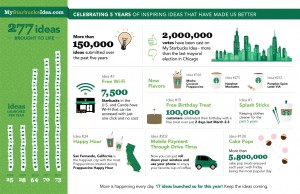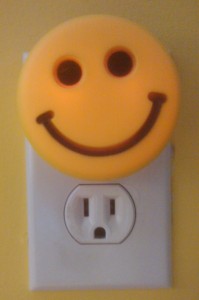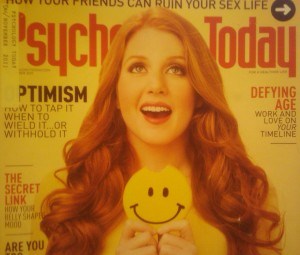When I first began to write this article I thought I’d start with a little history and facts to compare McDonald’s and Starbucks. I even thought that it would be nice if I created an infographic that showed the comparison. But, I’m not going to do that. If you hop over to Nasdaq or your favorite stock peering site you’ll find that both stocks are doing well. At the bottom of this article I’ve included links to fun facts about each of the companies.
Both companies have provided great returns to shareholders over the last 10 years. Both of these companies have a large and growing worldwide presence, a huge number of employees and partners. No, I’m not talking about those things because they are not a predictor of future performance. Heck, even each of the companies will remind you of that in their safe harbor statements. And remember, there are plenty of darling stocks that perform, at least until they don’t.
Remaining culturally relevant and connected to consumers share of mind and wallet
No, I’m going a different direction. I want to talk about things that aren’t so closely tied to stock performance or revered in annual reports and press releases. I want to begin a discussion of how each of these companies source innovative ideas and ask readers if you think that this topic has any bearing on a company’s ability to be sustainable, viable, cultural relevant, and able to gain a share of your mind and wallet.

Starbucks practices on sourcing innovative ideas
Starbucks encourages idea submission from anybody, inside or outside the organization and even encourages you to vote, share, discuss, and see other peoples ideas as they are made visible on the My Starbucks Idea website. Experience it for yourself at
http://www.mystarbucksidea.com
One of the reasons for the My Starbucks Idea website is that CEO Howard Schultz wanted to improve the customer experience. He felt that the 60 million customers visiting its stores on a weekly basis might have something to say about what the future Starbucks experience should look like. In that sense Starbucks customers are encouraged to co-create the future. In the first five years of the My Starbucks Idea website, from 2008-2013, 150,000 ideas have been submitted from customers with 277 of those being implemented.
McDonald’s official policy on unsolicited ideas
McDonald’s, on the other hand, doesn’t have an equivalent My McDonald’s idea website. If fact, they make it very clear in an FAQ that resides on their website exactly what their policy is concerning ideas, “It is our company’s policy not to consider unsolicited ideas from outside the McDonald’s system. Because we are always working on new ideas and strategies within the Company, we do not review ideas from outside McDonald’s to avoid confusion over the origin of an idea. We realize that we may be missing out on a few good ideas, but we had to adopt this policy for legal and business reasons.” When companies cite policy they appear less human as in the sign I saw at a McDonald’s in the Seattle area.
Did you know that McDonald’s delivers to its customers in 18 countries? But, if you want delivery in your country don’t bother asking or trying to vote on it. Remember, your ideas are unwelcome and irrelevant. I find that a little offensive. I also find it a little off-putting that the McDonald’s system, as they put it, does not include the customer. Any organization’s business system, or promise delivery system as I call it, should have the customer at the core. Imagine the burden this places on Hamburger University and Franchise owners. They must innovate and own all of the good ideas in isolation, a tall order for them compared to the 60 million customers that visit a McDonald’s each day that may actually have some insights to share and ideas how to improve the McDonald’s experience. For my mental model on a promise delivery system, check out Chapter 8: Promise Delivery System of my book.
If we are voting on which company and brand will be more culturally relevant across populations and feel more human and alive, I’ll vote for the Starbucks brand. If, on the other hand, we are voting on which brand will attract me for the late night drive through or clean restrooms available during a road trip, I’ll tip my hat to McDonald’s. But, I’m only one customer. I’d like to understand how each of their practices around ideas makes you feel as a consumer? Which brand speaks more to you?
Try This! What about in your own organization – does it matter where an idea comes from? Could it come from customers? Does it matter at what level of the organization the idea comes from – Senior Vice President versus the most recent hire in accounts payable? What about a supplier? Do you know the answer and if you do, would others in your organization see it the same as you do? Start this discussion inside your organization.
My book is the Experience Design BLUEPRINT: Recipes for Creating Happier Customers and Healthier Organizations. Read it and you’ll be better equipped to design more remarkable customer experiences and then make those experiences come to life in your organization and the business landscape. You’ll also build a more relevant and enduring organization.
Here are those fun facts on Starbucks and McDonalds.
About the Author
Gregory Olson is a consultant, speaker, and author of The Experience Design BLUEPRINT: Recipes for Creating Happier Customers and Healthier Organizations.
Connect with Greg on Linkedin, Facebook, or Twitter.
Exercises and mental models in the book will build your confidence and competence in envisioning better possibilities and then making them come true, whether you are working alone or alongside a team. Chapters in the book that especially pertain to this post include:
- Chapter 1: What Makes and Experience?
- Chapter 5: The Rental Car Experience?
- Chapter 6: Aiming for Remarkable, Unbroken, and Generous Design
- Chapter 7: Improving the Journey
- Chapter 8: The Promise Delivery System
- Chapter 9: The Neighborhood
- Chapter 14: The World of Work Has Changed
- Chapter 14: From Argh to Aha!
See a book summary. Read the book reviews on Amazon. Read The Experience Design Blueprint on Kindle or any device using the free Kindle Reader application or read the full color print edition. Already read it? Please connect and let me know.

















 Timely and relevant communications is essential for businesses to reach their target audience. Anything less is noise that will largely go unnoticed or worse irritate the intended audience. Sadly, many organizations fall into the trap of poorly segmenting communications. Sales and even some marketing personnel fail to differentiate between suspects, prospects, and customers. When this happens, loyal customers are often overlooked. Think how a loyal customer feels about your brand when prospects receive better offers than they do. This results in customer churn, diminished sales, and poor loyalty.
Timely and relevant communications is essential for businesses to reach their target audience. Anything less is noise that will largely go unnoticed or worse irritate the intended audience. Sadly, many organizations fall into the trap of poorly segmenting communications. Sales and even some marketing personnel fail to differentiate between suspects, prospects, and customers. When this happens, loyal customers are often overlooked. Think how a loyal customer feels about your brand when prospects receive better offers than they do. This results in customer churn, diminished sales, and poor loyalty.